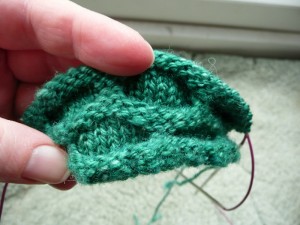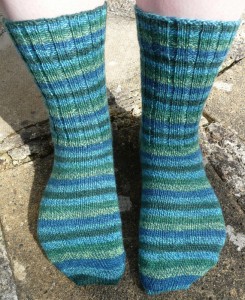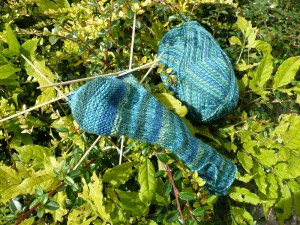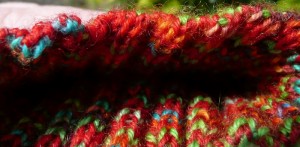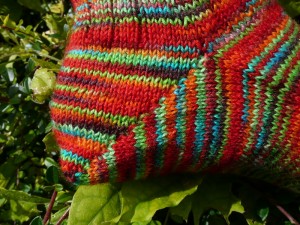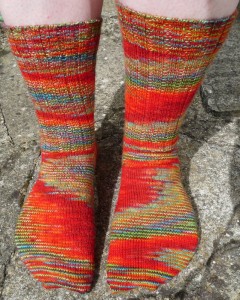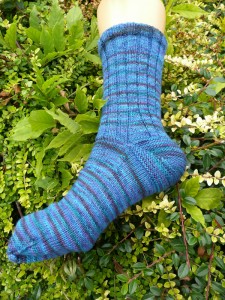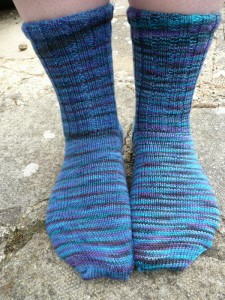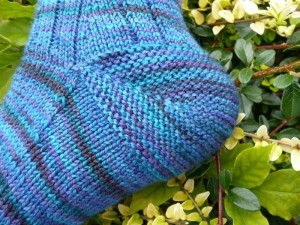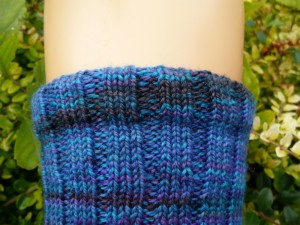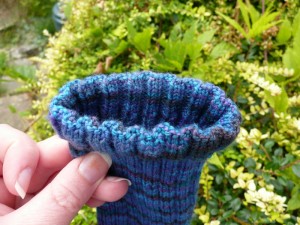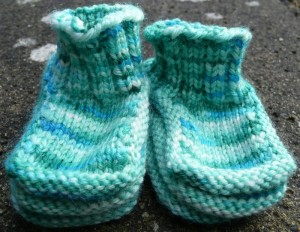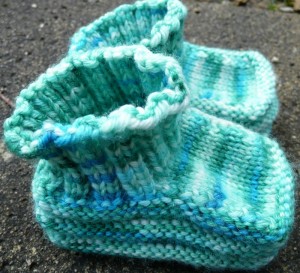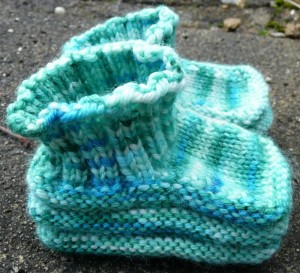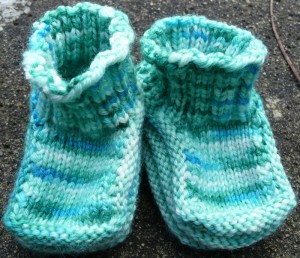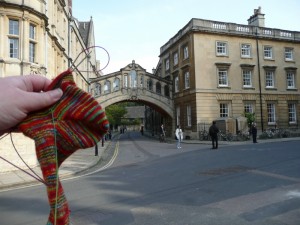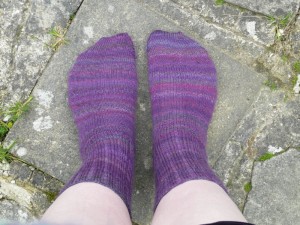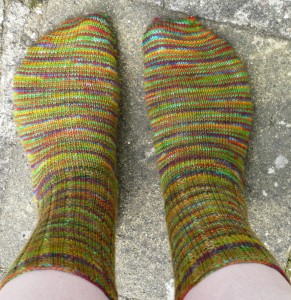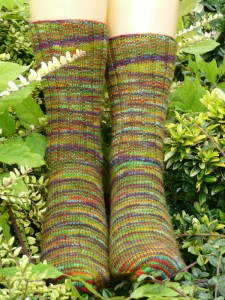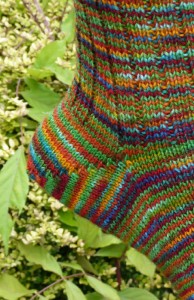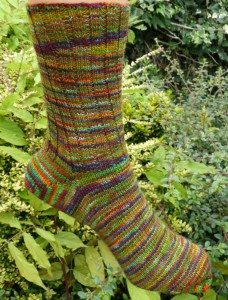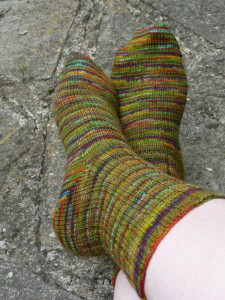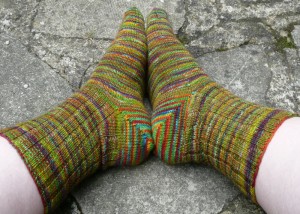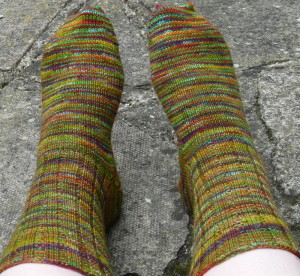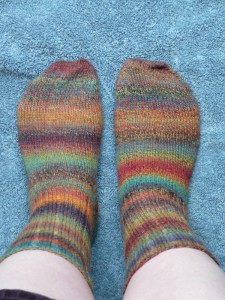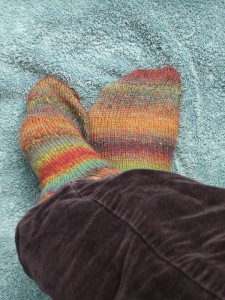I finished these a little while ago now, and have finally photographed them (why do I feel that I am always saying this? I really must get round to photographing things more quickly after finishing them).
They are inspired by the Scrunchie Hand Warmers (Ravelry link) by Leah Oakley from 101 Designer One-Skein Wonders which Jo made. I used the same pattern for the leg, then did a garter stitch short row heel and a plain stocking stitch foot.
which Jo made. I used the same pattern for the leg, then did a garter stitch short row heel and a plain stocking stitch foot.
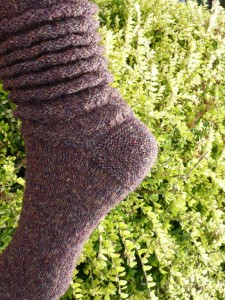
The yarn is 4ply Shetland, bought on a cone from Uppingham Yarns. The yarn is designed for machine knitting, and so comes oiled. This time I skeined enough off for the socks, gave it a nice wash, and then balled it up when it was dry. A much nicer knitting experience than knitting with the oiled yarn. I think oiled yarn varies a lot in how much oil there actually is in it. I have knitted with some of the ColourMart yarn, which although oiled doesn’t really feel it. I find that the Shetland, and the lambswool from Uppingham both make my hands feel quite sticky when I knit with the oiled versions. Also I was surprised at how dark and yucky the water was when I washed the yarn, so better out than in.
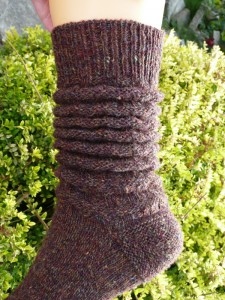
I love the colour, a really interesting flecked brown. You would be surprised at the different colours you can see when you look closely. Quite a lot of shades of brown, and some yellow, but also bright blue and red.
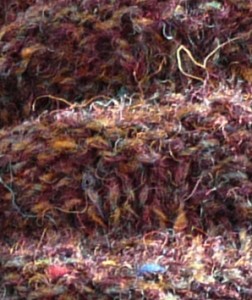
However I don’t think it is going to be a very hard wearing sock yarn. I wanted to try out the pattern, and the garter stitch short row heel, and will enjoy them while they last. I was thinking of using them as bedsocks once the weather gets colder.
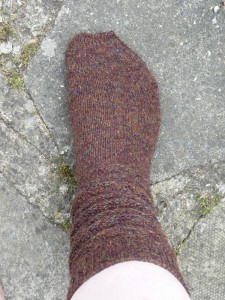
The heel was really enjoyable to do, and I love how nice and symmetrical it is. It is one of the problems I have with all of the methods of stocking stitch short row heels that I have tried so far. Since you are working stocking stitch, you end up having to use two different methods to close the short-row gap, one for knit rows and one for purl rows, and I have yet to find a method where they actually look the same. Leaving you inevitably with one side of the heel which is neater than the other. This is conveniently eliminated with the garter stitch short row heel since all rows are knit, so you only need one method. Incidentally the method I use is to wrap the stitch like you would with a conventional wrap and turn. Then when it comes to close the gap you just ignore the wrap, and because of the way garter stitch lies the wrap just looks like another stitch.
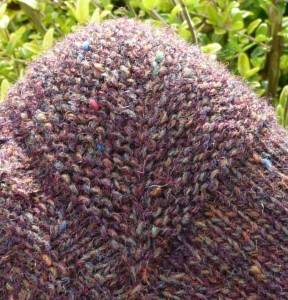
I think this is my favourite heel so far to make and look at. It hasn’t been cold enough yet to wear them, apart from a quick modelling session, so it remains to be seen how comfortable they are and how well they wear.
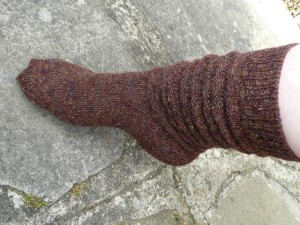
These took me a while to make, partially due to my experimenting with different tubular cast-ons. The effect being that I lost count of the number of times I casted on, knitted a few rows, decided I didn’t like it and tried again. Luckily I have a whole cone of this yarn, I’m not going to run out any time soon.
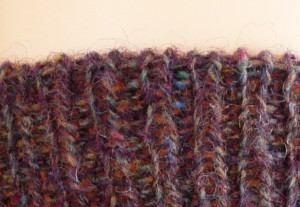
The upshot of all the experimentation was that a couple of the methods don’t come out stretchy enough when I do them, but I did find a method I liked. I settled on the following method:
- Provisionally cast on half the stitches you need (I like the crochet over the needle method).
- Foundation row: Work k1, yo all the way across, join in round.
- Row 1: k1, slip 1 with yarn in front. Don’t pull the yarn too tight on the slip stitches.
- Row 2: slip 1 with yarn in back, p1.
- Repeat Rows 1 & 2 once more.
- Start your k1, p1 rib.
- After a few rounds you can take out your provisional cast on.
- Ta da! Admire your lovely stretchy tubular cast on.
This is Tubular cast-on: version A in “Vogue Knitting”: The Ultimate Knitting Book , doctored so it works in the round.
, doctored so it works in the round.
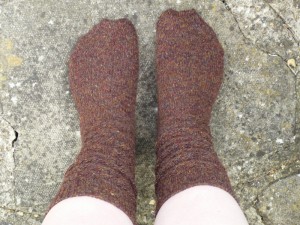
The only difficulty with this cast on is that it doesn’t really work with my preferred cuff rib. Usually I like to work a 3×2 rib cuff, decreasing to a 3×1 rib for the legs. Really this cast on only works for a 1×1 rib. The other main method of tubular cast on can be fiddled to get a 2×2 rib but it does require some gymnastics. I think I will do some more experiments.
